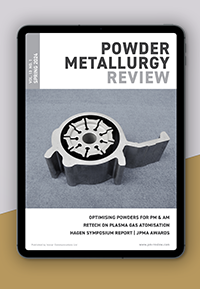Automakers call for seven key conditions to deliver on CO2 targets for light-duty vehicles
July 6, 2023
The European Automobile Manufacturers’ Association (ACEA) has reported that negotiators recently concluded the review of the EU’s CO2 regulation for light-duty vehicles, fixing CO2 targets for 2030 and a 100% target for 2035. While the ACEA was committed to achieving these targets, having already invested €250 billion in electrification, it stated that the industry alone cannot achieve these ambitious targets.
“That’s why policy makers must get the enabling conditions right – and before the European Commission’s current mandate ends,” it was added. To further accelerate the decarbonisation of light-duty vehicles, ACEA therefore outlined seven actions for realising the 2025 and 2030 CO2 reduction targets.
The recommended actions are as follows:
- Establish an ambitious and competitive industrial policy
Highlighting that the EU lacks a robust response to the US Inflation Reduction Act (IRA), which provides vast incentives for clean technology investments, ACEA urges the Commission to initiate a structured dialogue with other global players to prevent investment leakage and retain employment in Europe. While it acknowledges that the Critical Raw Materials (CRMA) and Net-Zero Industry Acts (NZIA) are part of the response, ACEA reminds policy makers that a sufficient supply of materials and batteries will be critical to ensuring the industry can meet the CO2 targets, especially the 100% target in 2035. As such, it suggests that the Commission should present a roadmap for critical raw materials as part of its trade diplomacy. - Fast-track recharging and refuelling infrastructure
It also advises that member states swiftly implement the Alternative Fuels Infrastructure Regulation (AFIR) while the European Alternative Fuels Observatory (EAFO) ensures a robust monitoring system that incentivises member states to deploy infrastructure faster. It also shared that the Energy Performance of Buildings Directive (EPBD) negotiation’s outcomes should be ambitious and boost private charging infrastructure. The Commission should provide clear guidance on funding opportunities currently underexploited by member states and the industry. - Boost the greening of corporate fleets
It also acknowledges that some stakeholders argue that corporate fleets are a crucial segment of the e-mobility transition and could create a second-hand electric vehicle market more rapidly. It advises that greening of corporate fleets should not replace the CO2 regulation’s targets but instead stimulate market development, advising that the Commission should:
- Carefully assess the impact of any regulatory initiative affecting the new and second-hand markets, and vehicle affordability/availability, e.g. limitations on battery availability. Moreover, any impact assessment should give guidance on the reasonable scope and size of the targeted fleets.
- Ensure that any possible additional regulatory initiatives follow the basic framework and timelines agreed in the CO2 fleet regulation. The shift to e-mobility will be driven across all segments and will heavily depend on member states’ implementation of AFIR. The initiative should neither cause market distortions nor exceed the CO2 regulation’s ambition levels.
- Respect differences between passenger cars and vans, e.g. their specific uses, and decarbonisation progress.
- Focus on large corporate fleets only, excluding micro-enterprises and vehicles for individual use, e.g. private leases.
- Link any new initiative on the greening of corporate fleets with supportive financial and non-financial instruments at the member-state level.
- Boost demand for public fleets
ACEA highlights its belief that public authorities should be leaders in decarbonising their vehicles, especially as public fleets represent a significant portion of new registrations, sharing that the Clean Vehicles Directive is a unique tool to accelerate the greening of public fleets and boost market development. ACEA urges the Commission to:
- Deliver an implementation report on the Clean Vehicles Directive to demonstrate the actual extent of implementation in member states.
- Based on the implementation report, conduct a review of the Clean Vehicles Directive to boost the e-mobility of public fleets.
- Consider whether a Regulation (instead of a Directive) is needed to address diverging implementation levels across the EU.
- Prolong national support schemes
ACEA advises that the Commission develops a blueprint for taxation schemes to ramp up electrification in line with the agreed CO2 and corporate fleet targets. Together with member states, they should also organise a high-level event to compare best practices from national schemes, including different implementation timelines. - Speed up the upskilling and reskilling agenda
Skill shortages and labour market transformation can undermine the transition to low- and zero-emission mobility; ACEA advises that the Commission develops a dedicated upskilling and reskilling agenda for the auto sector that is coherent with other policy initiatives, for example, the Pact for Skills, the European Battery Alliance (EBA) Academies, the recently proposed Net-Zero Academies, etc.
It also states that the EU should provide dedicated funding for partnerships, such as the Automotive Skills Alliance (ASA), to facilitate upskilling and reskilling initiatives. Funding for the ASA could support training courses in member states and regions in the most need. It recommends that the Commission should also provide a simple overview of all EU funding opportunities that support skills transformation. - Reinforce the better regulation agenda
ACEA suggests that the Commission should revisit the smart and better regulation agenda, which was downgraded under the current mandate, stating that there is a lack of coherence between EU regulatory initiatives, for example, the CO2 regulation’s decarbonisation pathways, Euro 7, AFIR’s objectives, and corporate fleet targets. It advises that the better regulation agenda’s basic rules, such as sufficient lead times, thorough impact assessments, and competitiveness checks, should be respected.
Finally, the ACEA concluded that the Commission should also present a clear overview of the outcomes of the Fit for 55 package and assess the coherence of the whole package with its individual proposals.
Download PM Review magazine
















